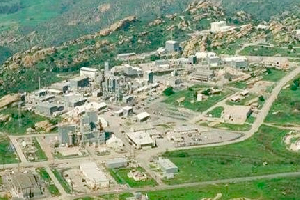 The Santa Susana Field Laboratory.
The Santa Susana Field Laboratory.
Japan’s nuclear power crisis has planted indelible memories worldwide and revived doubts about the health and safety of nuclear power. It may unsettle many to discover that California, too, experienced a partial nuclear meltdown. The accident, which occurred in 1959, is claimed to have released more radiation than Three Mile Island. The severity of health impacts from this incident on site workers, and to the surrounding community, is still being debated to this day.
[jwplayer config="QUEST Audio Player" skin="http://ww2.kqed.org/quest/wp-content/themes/quest/glow.zip" file="http://www.kqed.org/.stream/anon/radio/quest/2011/03/2011-03-21-quest.mp3" ]
Listen to the QUEST radio story Nuclear's Future in the U.S.
Don’t remember hearing about the accident? Not many do. Located in Ventura County, California, The Santa Susana Field Laboratory (SSFL) was a testing site for rockets and nuclear work during the dawn of the Cold War. As such, there was an experimental attitude and secrecy associated with this site as these technologies were being developed. The events at SSFL essentially lay hidden from the public for twenty years. It wasn’t until scares from the Three Mile Island disaster in 1979 ignited UCLA and reporters to unearth the nuclear accident at SSFL that the public first learned about the immensity of this meltdown.
